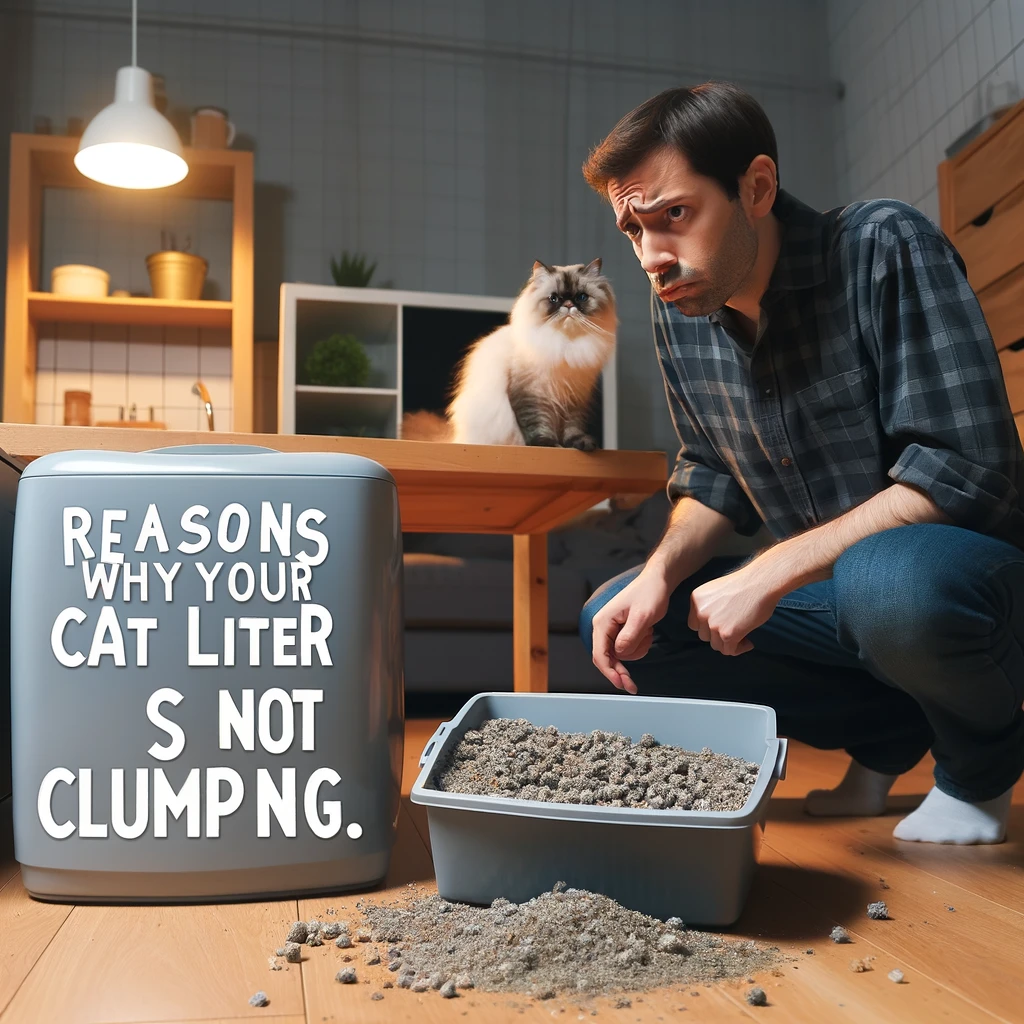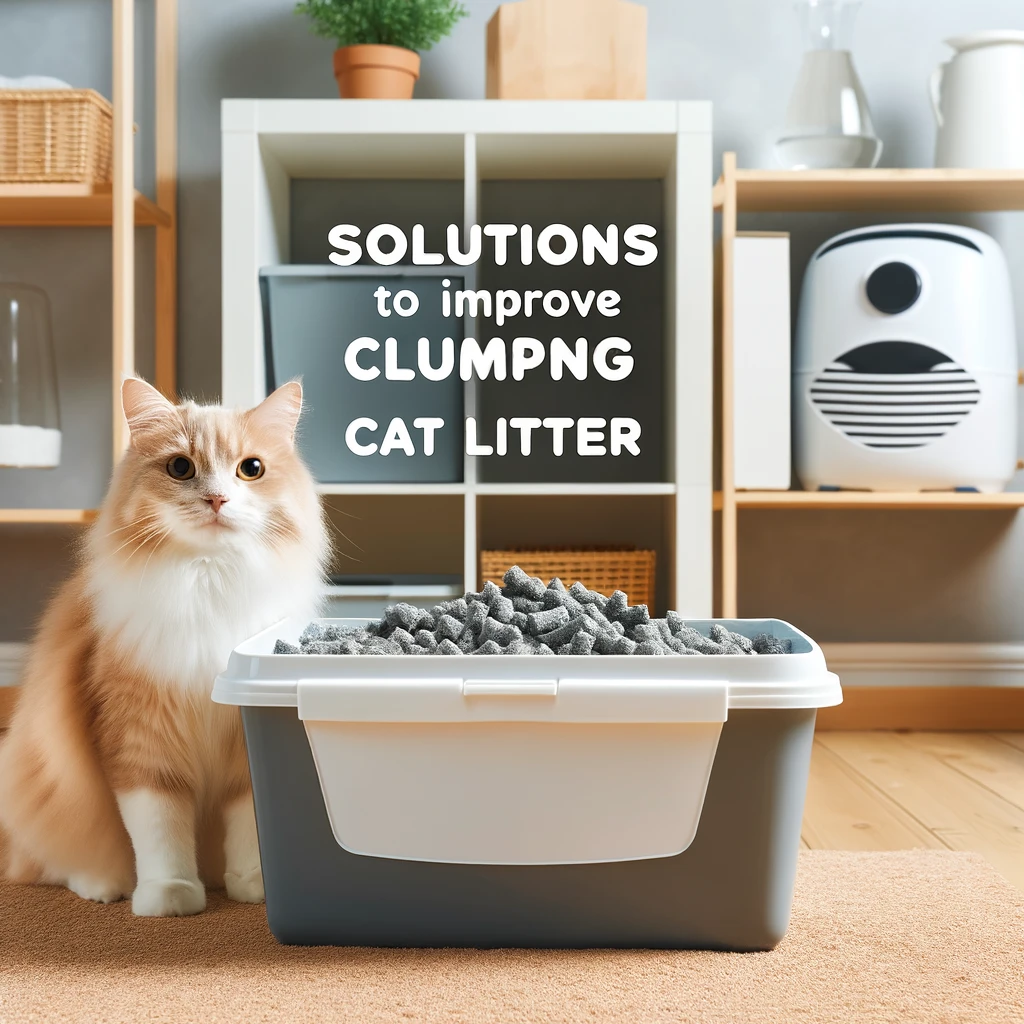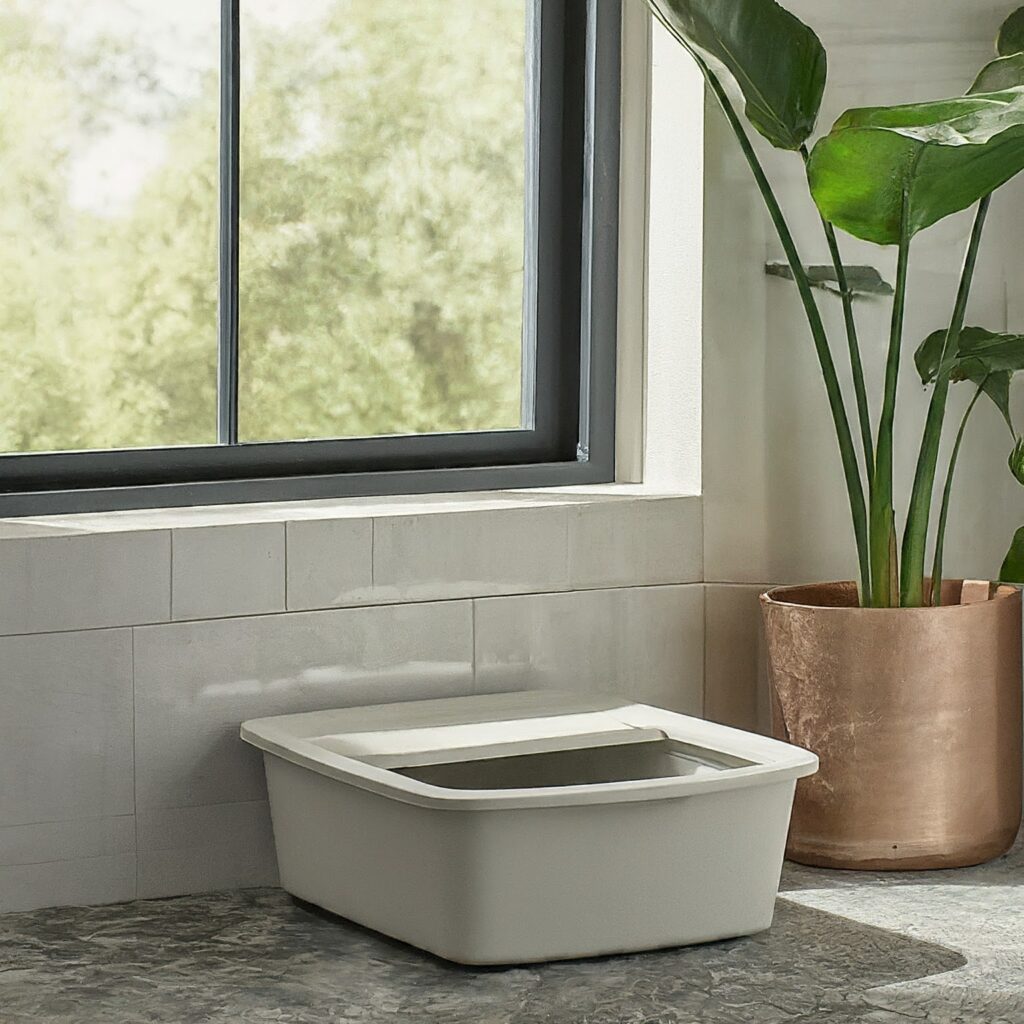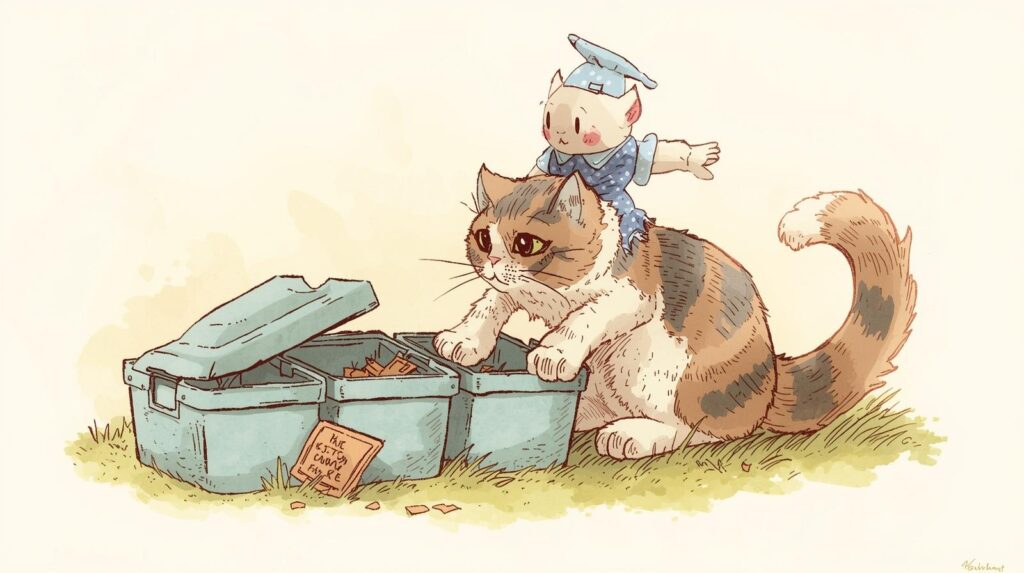Dealing with cat litter, that is not clumping properly can be a frustrating experience for pet owners. A well-functioning litter is crucial for maintaining a clean and odor-free home, as well as ensuring your cat stays happy and healthy.
When litter fails to clump, it can lead to several issues, including increased odors, difficulty in cleaning the litter box, and higher costs due to more frequent litter changes.
In this article, we’ll explore the common reasons behind non-clumping litter, tips for choosing the right type of litter, and effective solutions to ensure your litter box remains a clean and pleasant environment for both you and your cat.
What is clumping cat litter?
Clumping cat litter is a type of litter designed to form solid clumps when it comes into contact with moisture, such as cat urine. These clumps are easy to scoop out, making the cleaning process more convenient and efficient for cat owners.
The primary advantage of clumping cat litter is its ability to isolate waste quickly, reducing the spread of unpleasant smells and minimizing the need for frequent full litter box changes. This type of litter is especially popular among cat owners who prioritize cleanliness and ease of maintenance. With its ability to simplify litter box care, clumping cat litter has become a preferred choice for many households with cats.
Why is My Cat Litter Not Clumping?

Clumping cat litter is a popular choice for many pet owners due to its convenience and effectiveness in maintaining a clean litter box. However, sometimes the litter may not clump properly, leading to frustration and additional cleaning challenges. If you’ve been asking yourself, “Why is my cat litter not clumping?”
Here are some reasons, your cat litter might not be clumping properly:
- Low-Quality Litter
- Excess Moisture
- Not Enough Litter
- Improper Mixing
- Expired Litter
Let’s discuss these points in detail:
Low-Quality Litter
One common reason your cat litter might not be clumping is because of its quality. Low-quality litters often lack essential components like high-grade bentonite clay, which is crucial for clumping.
These litters might have fillers or other materials that don’t absorb and bind moisture well. As a result, when your cat uses the litter box, the moisture doesn’t form solid clumps, making the litter messy and hard to clean.
Excess Moisture
Excess moisture in the environment or in the litter box itself can prevent litter from clumping properly. High humidity in your home can cause the litter to absorb moisture from the air, making it less effective.
Additionally, if water is spilled into the litter box or if it is cleaned with too much water and not dried properly, the litter can become too wet. This excess moisture stops the litter from binding together, resulting in a wet, sludgy mess instead of solid clumps.
Not Enough Litter
The depth of the litter in the box is crucial for proper clumping. If there isn’t enough litter, it can’t absorb the moisture completely, preventing clumps from forming.
A shallow layer of litter doesn’t provide enough coverage and support for clumping, causing the moisture to spread out and mix with clean litter. This not only stops proper clumping but also makes it harder to keep the litter box clean and odor-free.
Improper Mixing
Improper mixing of old and new litter can lead to inconsistent clumping. When the litter box isn’t thoroughly cleaned and old litter is mixed with new, the effectiveness of the fresh litter is reduced.
The old litter might have already absorbed moisture and odors, lowering its ability to clump. This mixture can result in uneven clumping, with some areas forming clumps while others remain loose and wet. Fully emptying and cleaning the litter box before adding new litter is essential for maintaining good clumping performance.
Expired Litter
Cat litter can expire, just like any other product. Over time, the materials that help the litter clump can degrade, reducing its effectiveness.
Using expired litter can lead to poor clumping, as the components may no longer absorb and bind moisture well. Expired litter can become less effective at forming solid clumps, making it difficult to keep the litter box clean and odor-free.
Checking for expiration dates and replacing old litter can help ensure your cat’s litter box works properly.
Solutions to Improve Clumping

To ensure your cat litter clumps properly and maintains a clean and odor-free environment, consider implementing the following solutions:
Choose High-Quality Litter
Opt for a high-quality clumping litter made from premium bentonite clay or other effective clumping materials. These litters are designed to absorb moisture quickly and form solid clumps, making it easier to clean the litter box and maintain freshness.
Purchase small bags of different high-quality clumping litters and test them to see which one forms the best clumps and controls odors effectively.
Pay attention to the ingredients, focusing on those with high-quality bentonite clay or other proven clumping materials. Observing your cat’s reaction to each litter is also important, as some cats may prefer the texture or scent of certain brands over others.
Here is list of top 11 cat litter in 2024 check from these litter and find a perfect one for your needs
Control Moisture Levels
Keep the litter box in a dry, well-ventilated area to prevent excess moisture from affecting the litter. If your home is prone to high humidity, consider using a dehumidifier in the room where the litter box is located. Avoid spilling water into the litter box and ensure it is thoroughly dry after cleaning before adding fresh litter.
You can also use shreded paper cat litter to prevent this problem.
Maintain Proper Litter Depth
Ensure that you maintain an adequate depth of litter in the box, typically around 3-4 inches. This allows the litter to absorb moisture effectively and form clumps. Regularly top up the litter to maintain this depth, especially after scooping out waste.
Regularly Replace Litter
Periodically replace the entire batch of litter to ensure consistent clumping performance. Fully empty and clean the litter box before adding new litter to prevent the old litter from mixing with the new and compromising its effectiveness.
Use a Dehumidifier
If you live in a humid environment, using a dehumidifier in the room where the litter box is located can help control moisture levels. This will prevent the litter from absorbing excess humidity from the air, ensuring it clumps properly.
Check for Expiration Dates
Ensure that you are using fresh, unexpired litter. Check the packaging for expiration dates and replace the litter as needed. Using fresh litter will help maintain its clumping properties and keep the litter box clean and odor-free.
Check Purrfect Insights for more tips and solutions related to your cat and have a Purrfect day with your cat


